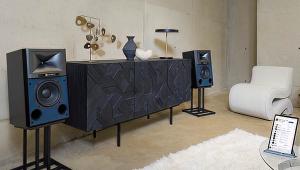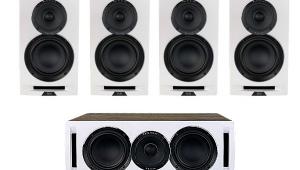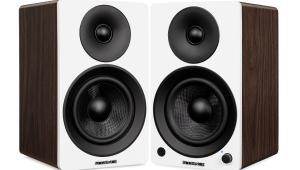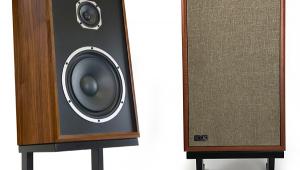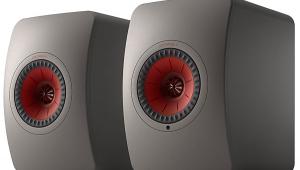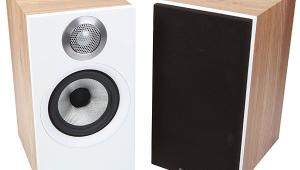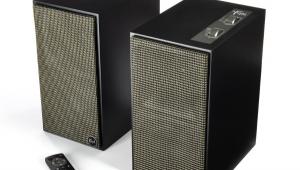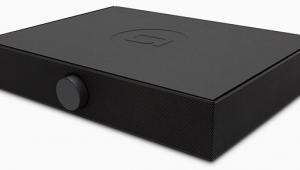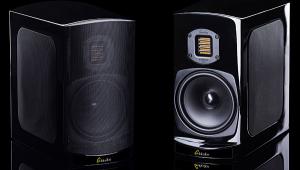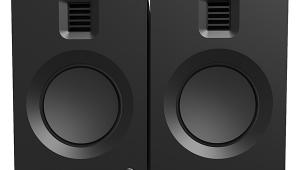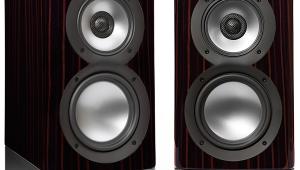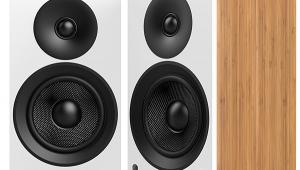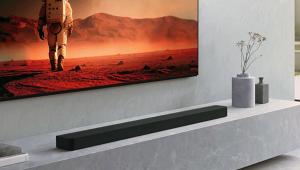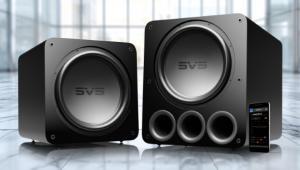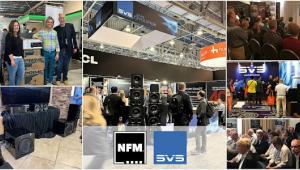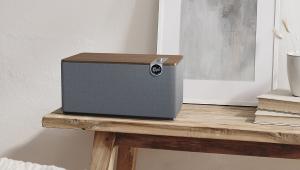GoldenEar SuperCinema 3 Speaker System

There are no second acts in American lives,” F. Scott Fitzgerald gloomily mused. Don’t tell that to Sandy Gross. Having cofounded Polk Audio and Definitive Technology, he has recently formed a third Baltimore-based loudspeaker company called GoldenEar Technology. I’ve asked Gross more than once why he’s launched a third speaker brand when the first two have left him at a pinnacle of material success. He always starts his reply with a broad smile that says it all.
The GoldenEar product lineup features a powered tower, slim but tall satellites in two sizes, two subwoofers, and packages based on various combinations of the above. Darryl Wilkinson has already broken the ice with the “flat-out spectacular” tower-based TritonCinema Two system (Home Theater, April 2011). This review will move down in scale to the SuperCinema 3, comprising five nearly identical satellites and the smaller of the two subs.
 Five Folded Tweeters
Five Folded Tweeters
When I just said “five nearly identical satellites,” I mean that the SuperSat 3 and SuperSat 3C come in same-sized enclosures with identical driver arrays. The only real differences are that the SuperSat 3C center speaker has the tweeter oriented horizontally, the logo badge in a different place on the grille, and comes with mounting hardware for horizontal as opposed to vertical placement. If you want to hang all five on the wall, there’s nothing to stop you; both speakers have keyhole mounts at each end of their molded plastic enclosures. Otherwise, it takes just a few seconds to mount the pedestal to each satellite with a Phillips-head screwdriver, once you’ve figured out how a tiny cylindrical brass insert fits into the screw hole. For cable management, you may decide to install a wire clip as well. Then you can place the speakers lovingly on your TV credenza.
Each SuperSat has two 4.5-inch polypropylene woofers employing Multi-Vaned Phase Plugs in rigid cast (as opposed to pressed) metal baskets. More unusual is the High Velocity Folded Ribbon (HVFR) tweeter, a 1.13-by-1.63-inch pleated diaphragm. While the name might be catchy, as noted in our earlier review of the TritonCinema 2, it takes liberty by incorrectly using the term “ribbon” to describe a diaphragm that isn’t electrically conductive in and of itself. Neither a piston-like pumping dome nor a backand-forth flat diaphragm, it has an accordion-like shape that squeezes air between the pleats. This enables it to “grab onto the air better,” Gross explains. The folded diaphragm itself moves less than a flat one, but it makes greater changes in the room’s air pressure. The claims include excellent transient response and greater extension (higher highs). This design was first developed by Oskar Heil in the 1970s but didn’t find wider use until a tough heat-resistant polyimide film, DuPont’s Kapton, became available. Heil also invented the first microwave generator. He knew a thing or two about waves.
Incidentally, if you live in a house where tiny fingers are always going boldly where none have gone before, these speakers are as close to kid-proof as you’ll find on this earth. The fabric grilles are protected with an underlying plastic lattice, and the folded diaphragm sits behind a grille of its own. I knocked one satellite to the floor, and it continued playing, no visible or audible harm done. Even with the pedestals installed, the speakers have a small footprint relative to their height, although they’re also heavy and therefore more stable than they look.

The SuperSats are reasonably sensitive at a rated 92 decibels. Recommended power is between 20 and 200 watts. The manual states that they can be driven to loud volume with moderate power but will readily welcome a high-power amplifier. A section called “Preventing Speaker Damage” that’s found here and in the Triton Two manual recommends good, clean, high-quality power for best performance and to avoid dangerous amplifier clipping. A mid- to high-priced A/V receiver is probably the best mate for the SuperSats. In practice, I found that they best maintained vocal clarity at low to moderate levels.
I was advised to set up the speakers farther apart than my usual positions. There was enough room to push the front left and right about 1 additional foot apart. This paid dividends when surround material gave way to stereo in the music demos. More on that later.

GoldenEar’s originality continues to manifest in the ForceField 3 subwoofer. Its depth, at nearly 16 inches, is greater than its height and width, about 11 inches each. The front resembles a symmetrical trapezoid, with parallel top and bottom, while the sides are non-parallel to diminish standing waves in the enclosure. On the front is an 8-inch active driver (which rises to 10 inches in the ForceField 4). On the bottom, in lieu of a port, is a passive radiator measuring 9.6 by 11.4 inches. The internal amplifier is rated at 700 watts RMS and 1,300 watts peak; GoldenEar splits the difference in its official 1,000-watt specification. There are both speaker-level inputs and an LFE input, with the latter bypassing the crossover. Mediating between the input signal and amplifier is digital signal processing that controls soft clipping, DC offset control, output stage saturation protection, and discrete multiband limiting. All of that amounts to a system where the amp is less likely to stress the driver into producing unwanted distortion or rude noises. The sub had enough input gain that I had to drop volume levels in both the sub and surround processor. A little extra headroom is never a bad thing.


